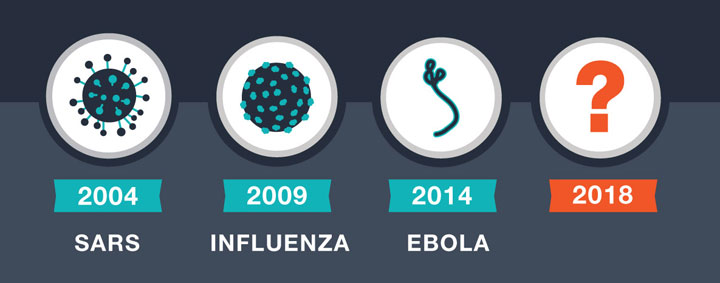Summary and Next Steps
The world is at greater risk than ever from global health threats. We may not know what the next epidemic will be, but we know that one is coming.
CDC works 24/7 to protect you.
www.cdc.gov/globalhealth/healthprotection
We cannot predict exactly where or when the next epidemic will begin or what it will be. But we know one is coming. This is why, even in the absence of a current crisis, global health security efforts must continue.
Due to the nature of infectious diseases, we will all remain vulnerable until every country in the world can rapidly identify and contain public health threats. Even a single gap in a remote area leaves everyone at risk. CDC closes the gaps by working across sectors to build core public health capacities in surveillance, laboratories, workforce development, and emergency management. Strengthening these public health capacities results in systems that can—and do—stop outbreaks from becoming world-endangering epidemics that threaten America.
The U.S. is at a critical point in the growth and sustainability of global health security. Prioritizing a sustained, focused commitment to global health security is vital to saving lives, using resources wisely, and minimizing political and economic instability around the world. The U.S. government’s commitment to global health security remains steadfast. To protect America’s health and wellbeing, we must continue to build upon the gains we have made. Global health security is national and economic security for America.
CDC, working domestically and globally to protect Americans, stands ready to support global health security and continues to work toward a world safe and secure from emerging and re-emerging health threats. Diseases won’t stop, and neither can we.

Photo Credit: Kayla Laserson, CDC India, FETP vaccination event
